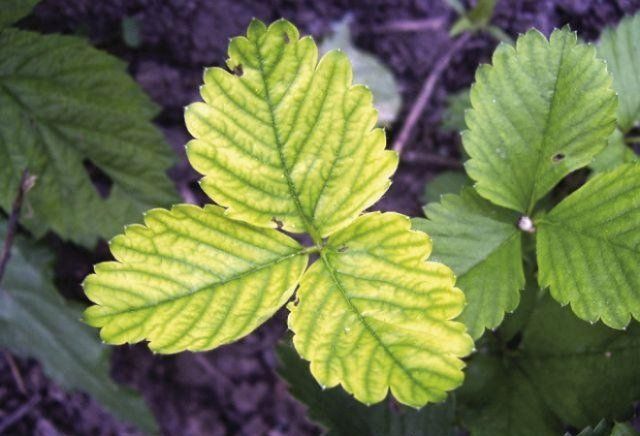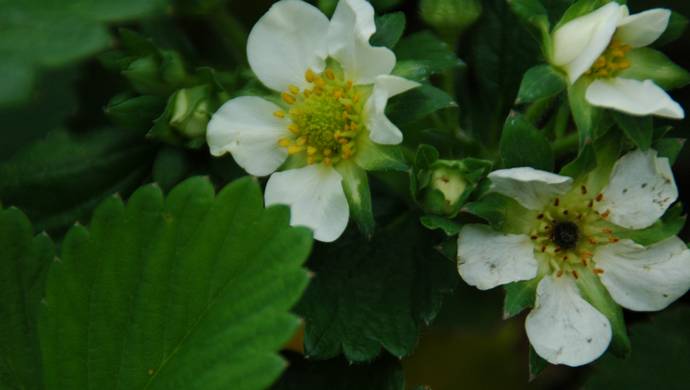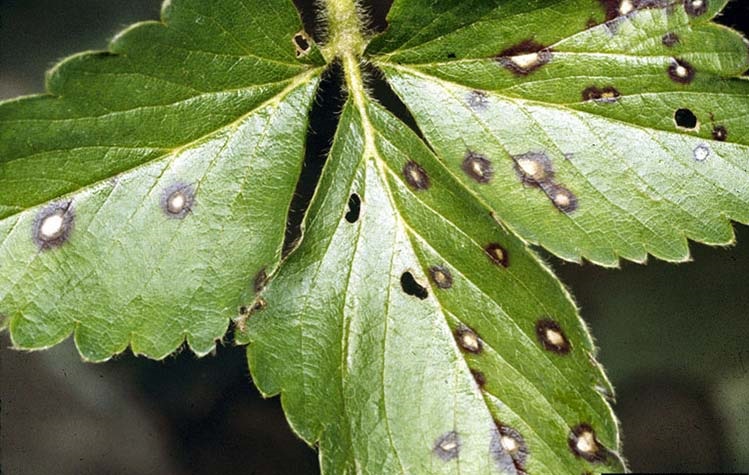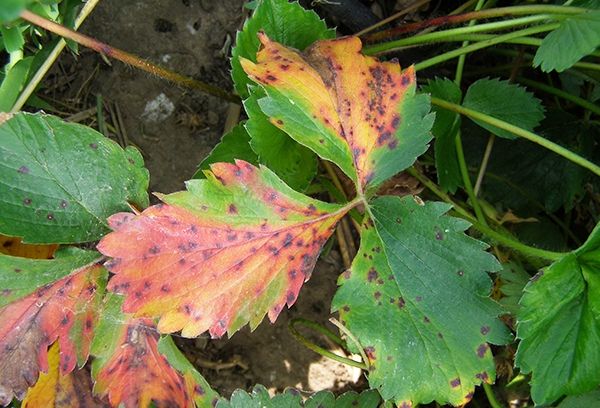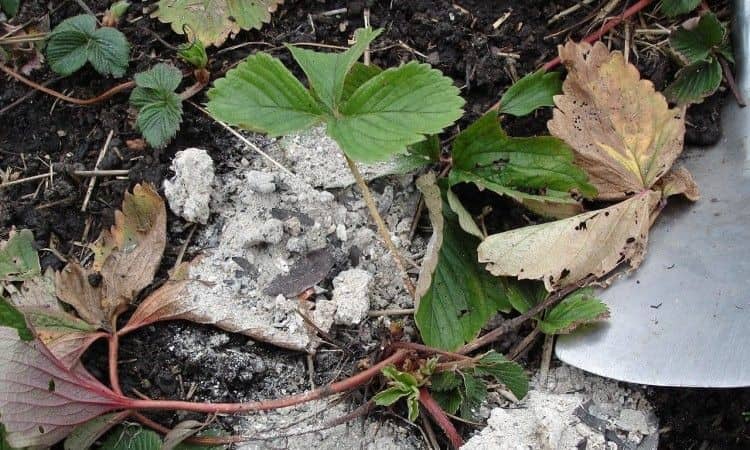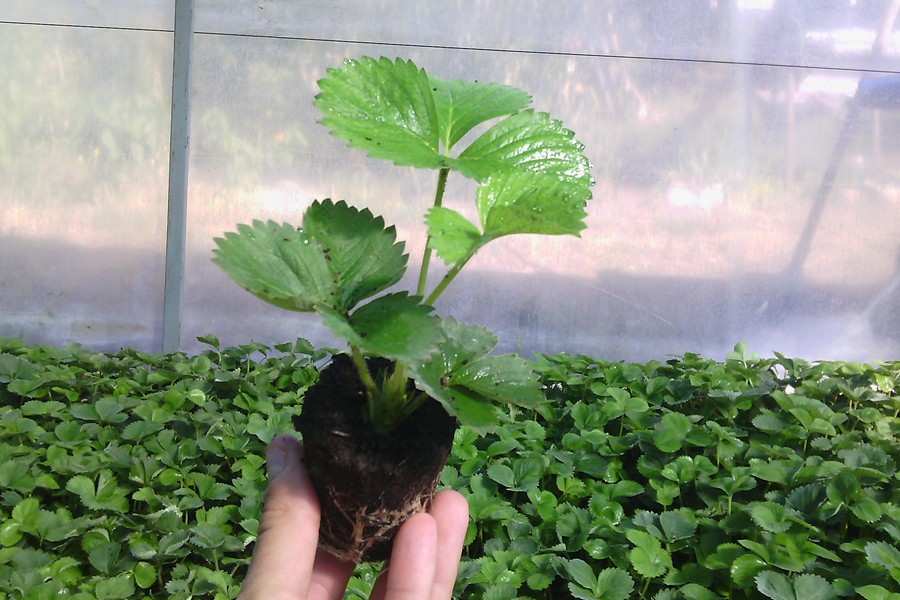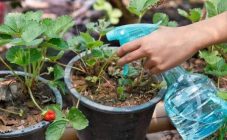Content:
In terms of its composition, strawberries are a unique crop that has a number of beneficial properties. It strengthens the immune system, prevents the development of colds, and can also reduce fever. This berry cleanses the human body of toxins, heals heart disease. In addition to numerous useful properties, it has a wonderful aroma and excellent taste. Thanks to this, strawberries are grown in almost all garden plots.
In the process of caring for a crop, it happens that gardeners are faced with various problems with growing a plentiful and healthy harvest. Sometimes yellowed leaves appear on strawberries. As soon as this symptom is detected, it is necessary to begin to apply measures in order to save the future harvest.
Causes of yellowing of strawberry leaves
The reasons why the color of the leaf plate changes can be various factors. For example, improper planting - making some mistakes in the process of planting plants in open ground. If strawberry bushes are planted at a great distance from each other, then direct sunlight on the berry bush can lead to leaf burns. To prevent this problem, the culture is covered with special materials.
The close arrangement of strawberry bushes leads to shading of the beds, which means that the opposite effect will occur: the strawberries will begin to lack sunlight. The roots will not receive the required amount of nutrients from the soil, which will also lead to yellowing of the green foliage. In addition to the yellow color of the leaves, thickened planting and lack of fresh air can lead to the appearance of a black stem on strawberries. This disease is manifested by blackening and decay of the root collar of the plant. Also, if the taste of strawberries is bitter, this may indicate that the culture grew in unfavorable conditions, with low illumination.
When choosing an area for strawberry beds, you need to choose the "right neighbors". Neighborhood with tulips or raspberries often leads to the fact that such a pest, like a weevil, passes from them to strawberries. When this insect appears, in addition to the yellowing of the leaves, the middle of the flower turns black on the strawberry.
Also, if strawberry flowers have black centers, this may indicate that the berry is frozen, there will be no harvest from such flowers. Therefore, so that the core of the strawberry does not turn black and the harvest is good, it is recommended to cover the crop with a special material, before the first frost begins.
In addition to being close to other crops, it is important to follow the rules of crop rotation. Strawberries are best planted after cereals, radishes, parsley, or garlic. Do not plant strawberries after aster or nightshade.
Yellow spots indicate increased soil acidity. Therefore, in order to save the crop, it is necessary to measure the pH level before planting strawberry bushes. If there are indications, then soil deoxidation should be carried out.
In the case when everything is in order with the leaves of the culture, but the strawberries do not fully ripen, becoming brownish in color and with a bright sweet taste, this indicates that the berries are affected by a dangerous fungal disease - leathery rot of the fruit. Affected bushes must be destroyed immediately, because over time, they will die anyway, and in this way it may be possible to save the healthy.
The gradual acquisition of a yellowish color by the leaves, and also, if the strawberry does not ripen, may indicate that the plant has undergone a disease such as strawberry chlorosis. This disease should be examined in detail and ways of effective treatment should be found.
Description of chlorosis
Strawberry chlorosis is a disease in which the leaves begin to turn yellowish. This process occurs when chlorophyll stops forming and the activity of photosynthesis begins to decline.
In addition to yellowing of the leaf plates, there are other signs of chlorosis:
- the beginning of the appearance of new smaller leaves (small-leaved);
- the edges of the leaves begin to curl;
- the tops of the shoots dry;
- leaves and inflorescences begin to fall off;
- the condition of the root system deteriorates, and sometimes it even dies off.
Before you start to fight this disease, you need to understand the cause of the appearance of strawberry chlorosis, respectively, to figure out what kind it is. There are several types of this disease.
Infectious chlorosis
Caused by fungi, viruses, and various other microorganisms. Pests in the garden are carriers of infectious chlorosis.
Non-infectious (functional) chlorosis
It occurs when the technology of growing crops is violated or due to a lack of nutrients (iron, sulfur, lime, zinc, magnesium or nitrogen) in the soil, as well as unfavorable weather conditions. Insufficiently good soil drainage, damaged root system can also cause non-infectious chlorosis.
Correct diagnosis of the disease will help you decide what to do and how to quickly cure the plant.
How to cure strawberries for chlorosis
With non-infectious chlorosis of strawberries, treatment is carried out by introducing missing nutrients into the soil. Medicinal feeding is applied next to the roots of diseased strawberries. Foliar dressing is also used by spraying diseased plants with special solutions.
If there is not enough iron in the soil, then such medications as Ferovit or Chelatin (12 ml per 1 bucket of water) are used for fertilization. Strawberry leaves are sprayed with ferrous sulfate solution.
To make sure that the appearance of chlorosis is caused by a lack of iron, you need to draw a letter or number on the yellowed strawberry leaf. In the case when the assumption is correct, this record will appear in bright green on a yellow piece of paper.
If there is a lack of magnesium, magnesium sulfate, Mag-Bor and Dolomite flour should be used.
If there is a lack of sulfur, it is recommended to use Kalimagnesia, potassium sulfate, Diammophos with sulfur and Azofosk with sulfur. They also contain other nutrients such as phosphorus, sodium, nitrogen and magnesium.
The low zinc content in the soil will help to replenish zinc oxide, superphosphate with zinc and zinc sulfate.
Calcium chlorosis is handled by feeding eggshells, wood ash and slaked lime.
The fight against infectious chlorosis is impossible due to the fact that it is incurable.Currently, there are no drugs to cure plants from infectious chlorosis. Accordingly, if this type of disease is found on strawberries, it is necessary to get rid of the diseased plant in a short time, otherwise bacteria can move from one bed to another, thereby infecting the entire area.
All drugs to combat chlorosis are chemical agents. At present, no folk methods have been identified to combat this disease. However, among gardeners there is an opinion that in the case of iron chlorosis, it is recommended to bury rusty nails under the plants. As many argue, this remedy is very effective and helps better than some expensive drugs.
In order to avoid this dangerous disease, it is recommended to periodically carry out preventive measures to prevent chlorosis. In the case when gardeners do not know what substances are missing in the soil, complex fertilizers should be used, which contain all the necessary elements to saturate the soil with all nutrients. This type of fertilizer includes Uniflor Micro, Kemira Lux and Florist Micro.
Fungicide solutions effectively help to decontaminate the soil before planting strawberries. Only healthy and disease-resistant strawberry varieties should be selected for planting. It is necessary to constantly clean the weeds, as well as to loosen the aisles.
It is also necessary to take measures to eliminate pests that can carry the disease from the sites. To do this, it is advisable to periodically drain damp areas, treat strawberries with special insect repellents.
A connoisseur of berries, like the strawberry weevil, can cause significant harm to the cultivated crop, therefore if the middle of the strawberry flower is black, it is also necessary to carry out a number of certain manipulations to get rid of this pest. Treatment is carried out with special drugs. Flowers with a black center are best torn off gently, because the beetle must have already deposited its larvae there.
With the correct diagnosis of strawberry disease and timely correct treatment, chlorosis or other diseases will begin to pass.
